National Museum of Nature and Science

Birds are the most numerous terrestrial vertebrates, with approximately 11,000 species, and thrive in a variety of environments around the world, from the sky and land to the water and polar regions. In Japan, bird classification is based on the Catalogue of Japanese Birds published by the Ornithological Society of Japan, but in recent years, the classification was revised for the first time in 12 years in September this year, taking into account the evolutionary history and lineages that have been revealed by the rapid progress of genome analysis.
The special exhibition "Birds: New bird lineages revealed by genome analysis" (until February 24, 2025) currently being held at the National Museum of Nature and Science in Ueno, Tokyo, explains the diverse charms of birds around the world, including their amazing ecology, based on the latest genome lineage classification. With over 600 bird specimens on display, it is the largest scale in the history of the National Museum of Nature and Science, and can be enjoyed by a wide range of people, from beginners to bird enthusiasts and avid bird watchers.
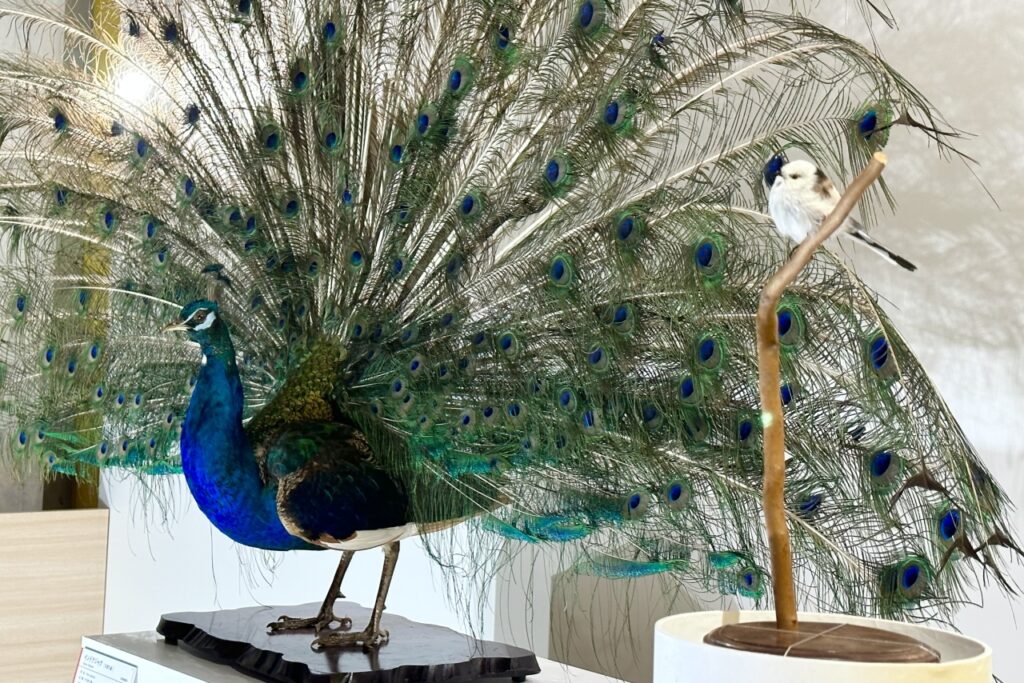

Nishiumi Isao (Chief Researcher in the Zoological Research Department at the National Museum of Nature and Science), who served as the overall supervisor of this exhibition, spoke about the significance of holding this exhibition at a press preview held prior to its opening as follows:
"Birds play a variety of roles in the ecological pyramid. For example, nectar-eating birds are involved in pollination, while seed-eating birds are involved in seed dispersal. Woodpeckers, who can dig nest holes, provide habitats for a variety of creatures that cannot make their own nest holes, such as flying squirrels and owls, and thus enrich biodiversity. Many of these birds have been declining in number in recent years, and some are on the verge of extinction. We believe that holding the 'Birds' exhibition, getting to know birds better and becoming familiar with them, is extremely important in considering the global environment."
According to Nishiumi, birds are particularly susceptible to environmental influences among animals. It is conservatively estimated that 1,430 species have become extinct due to human activity, which means that 12% of all species have become extinct. As a prologue to this exhibition, a corner on the theme of "extinction" is set up, and you can feel the strong desire of the curators to "above all else, let people know about the current situation surrounding birds."

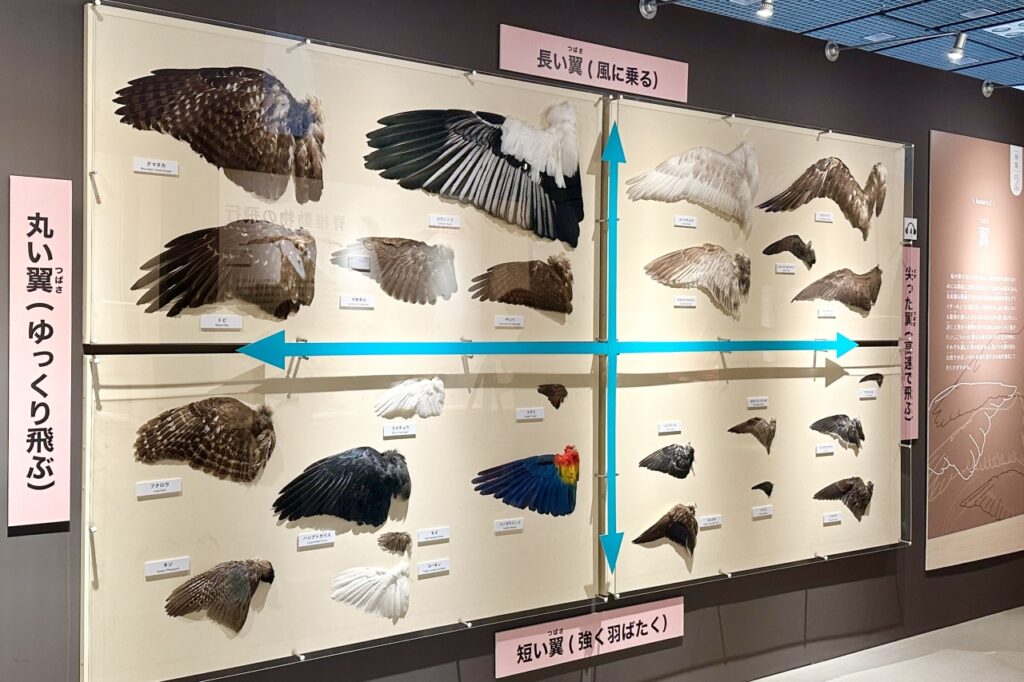
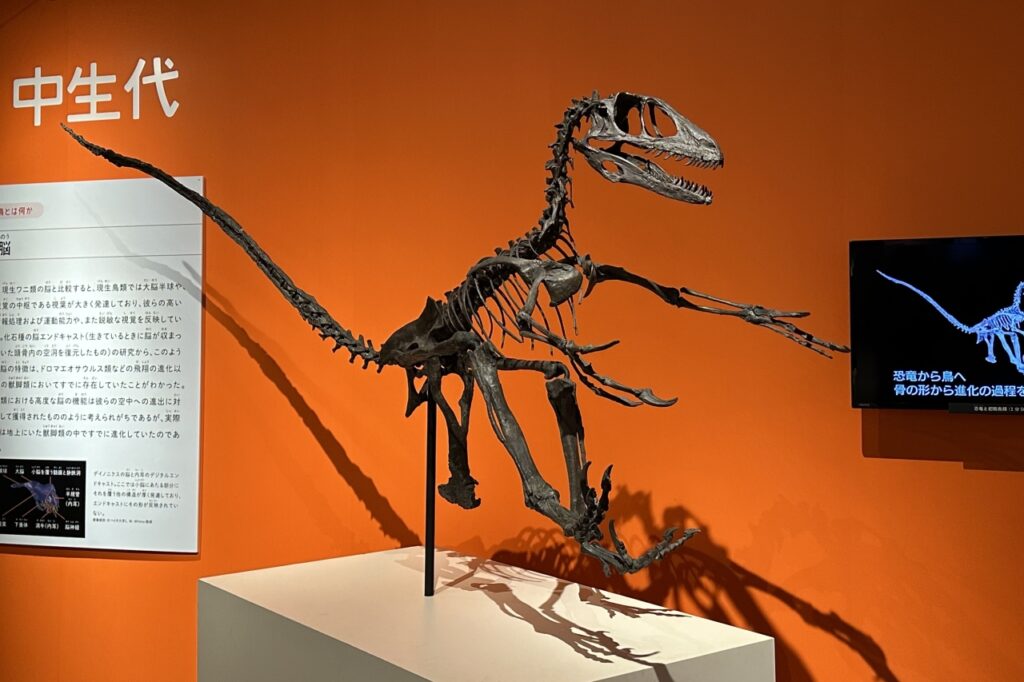
One of the highlights of this exhibition is the life-size reconstructed model of Pelagornis sandersi, the largest flying bird in history with a wingspan of up to 7m, which lived approximately 26 million years ago.

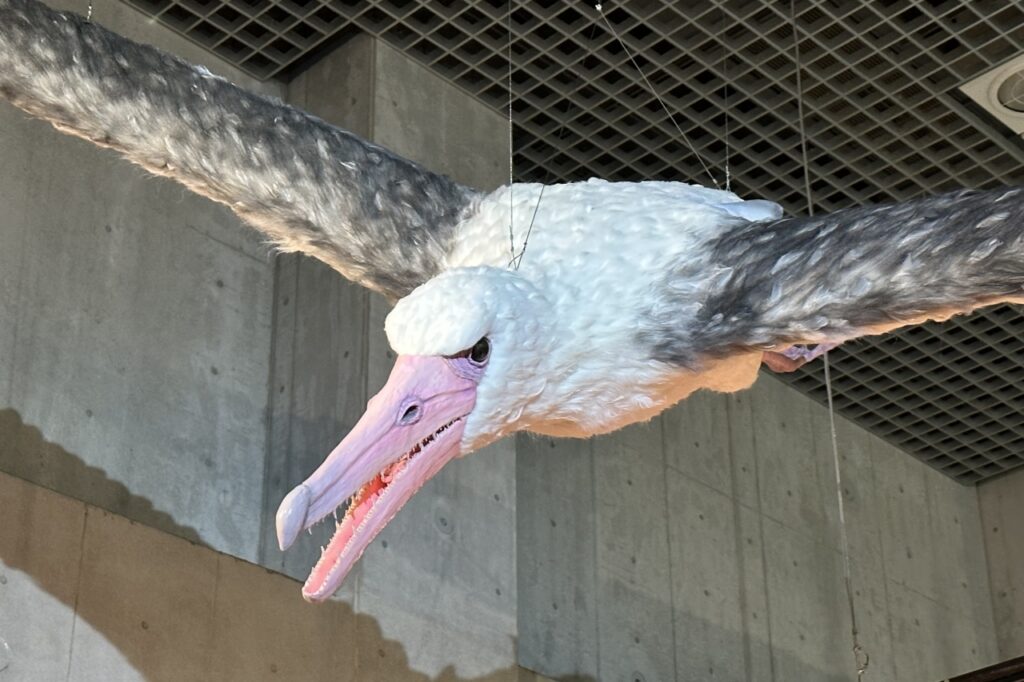
Takanobu Taibichi (Chief Researcher in the Department of Earth Sciences, National Museum of Nature and Science), who supervised this model, commented, "As far as we know, this is the largest flying bird in history. We attempted this restoration because we wanted to explore the potential of birds, or how large a bird needs to be to fly given its body structure, and to explore the diversity of shapes known from fossils, as well as the limits of shape."
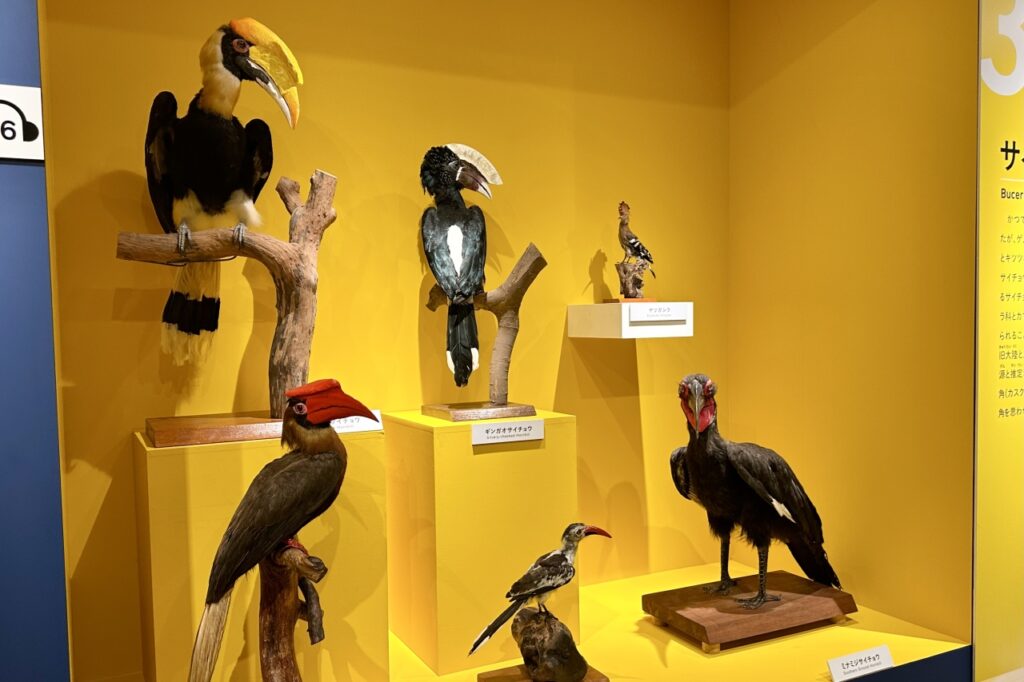
The greatest attraction of this exhibition is undoubtedly the volume of specimens .
According to Nishiumi, he carefully selected the best-looking specimens from the approximately 3,000 in the National Museum of Nature and Science's collection. With the cooperation of the Abiko Bird Museum, the only bird museum in Japan, and Himeji Museum, the exhibition features over 600 bird specimens from all over the world and throughout history, which is truly impressive. "See all the birds you'll ever see in your lifetime!?" is the exhibition's catchphrase, but as a rough guide, if you can observe more than 400 species of birds, you're considered a very experienced birdwatcher.
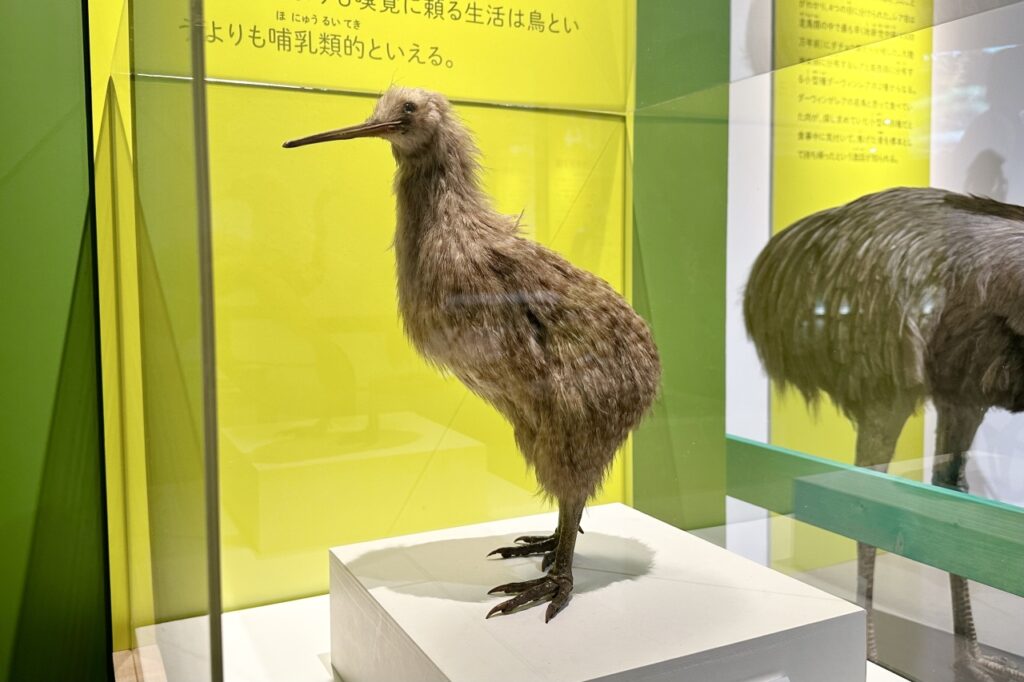

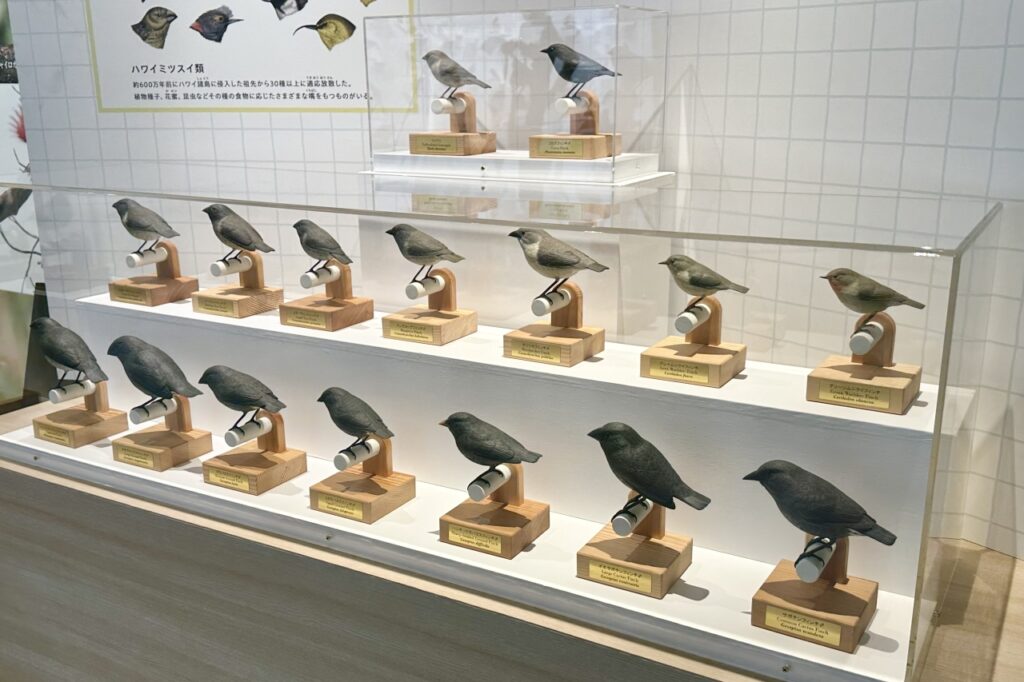
Cute birds, unique birds, rare birds… With such a wide variety, no matter what kind of bird you're looking for, you're sure to enjoy it.
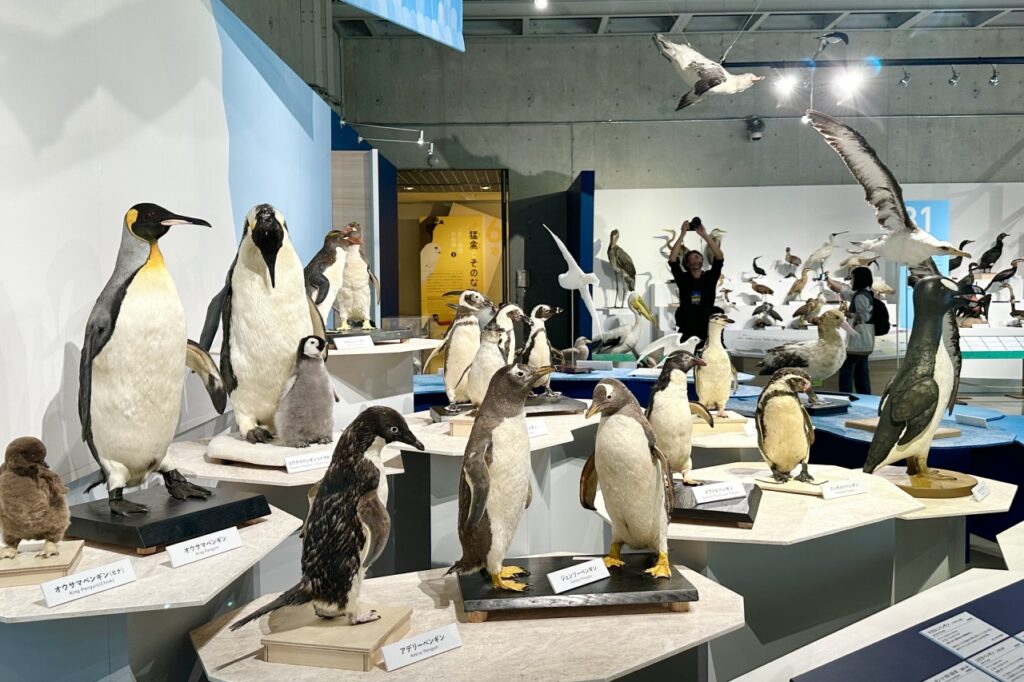
The venue is laid out according to taxonomic orders, and one area to pay particular attention to is the "Penguin Gathering" corner, which displays the order Sphenisciformes.
There are 15 specimens of 11 of the 18 extant species of penguins on display. Some specimens have unique poses, such as an emperor penguin watching over its chicks, while others have a sense of story in their arrangement, such as a group of African penguins and a group of Magellanic penguins staring in the same direction as if intrigued by something. The specimens come together as a single scene, creating an atmosphere almost like that of a zoo.
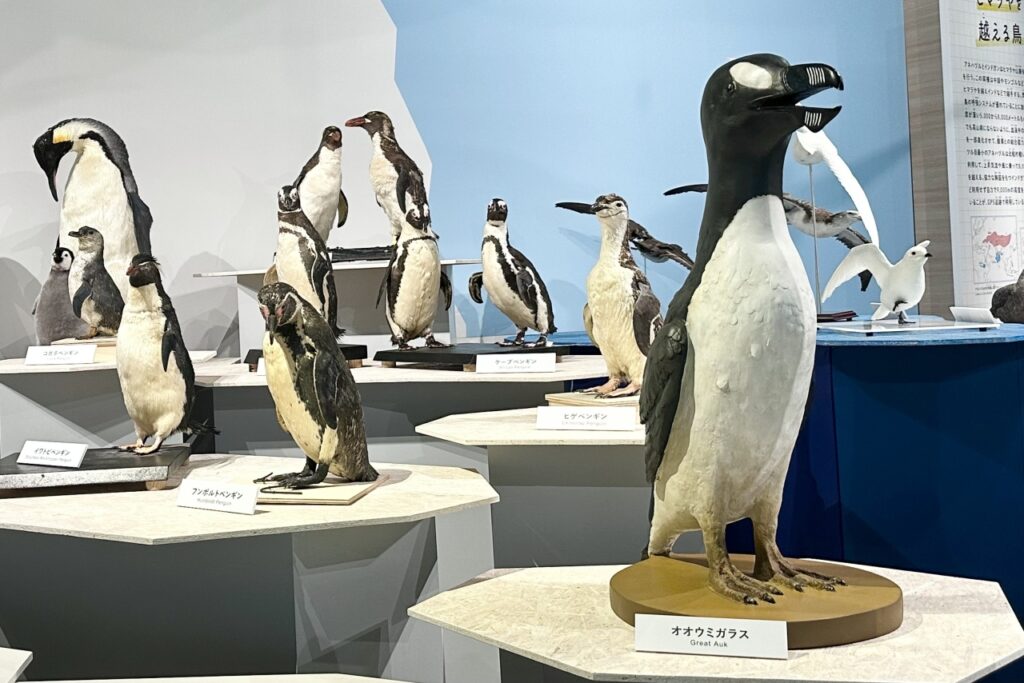
It's interesting to see the great auks, which look similar to penguins but are from a completely different family, casually mixed in like a game of spot the difference. Penguins are limited to the Southern Hemisphere, but it is said that flightless birds like the great auks have evolved convergently (※) in the Arctic as well.
(*)…When organisms from very different lineages are placed in the same environment, such as a fish shark and a mammal dolphin, or a bird's wing and a mammal's bat's wing, they acquire similar traits and functions.
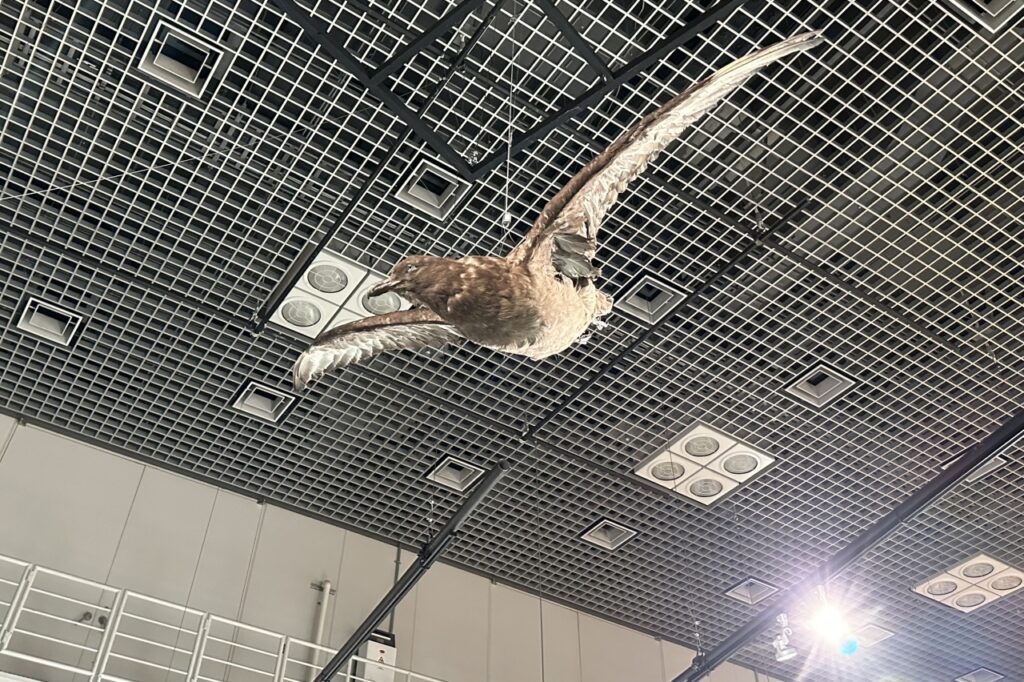
If you look up into the sky above the "Penguin Gathering" area, you'll see a South Polar skua, a predator that preys on penguin eggs and chicks, spreading its wings and appearing to be targeting the penguins. It's easy to miss the hanging exhibits, so we recommend taking a 360-degree look around the venue.

The exhibition is based on phylogenetic research using genome analysis, and one of its symbolic results is the establishment of the order Falconidae. In the traditional classification, which was based mainly on morphological differences, falcons were classified as part of the Falconidae family, and this had hardly been questioned until now. However, it has been discovered that they are actually closer to the parrots and passerines in terms of their lineage than to hawks.
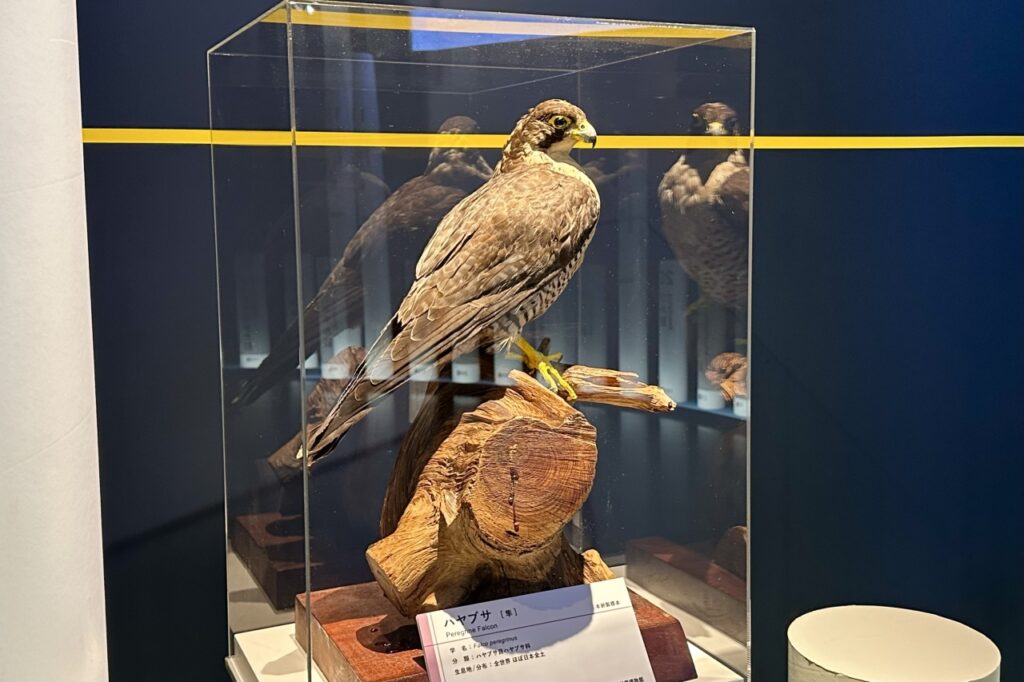

There are 44 orders, from Strigiformes to Passeriformes. However, while there are over 6,700 species of Passeriformes that are distributed almost worldwide, there is only one species of Hoatzin, the black-spotted hoatzin, that is endemic to the Amazon basin; there is a wide range in the number of species and their distribution ranges.
This rare bird, one species in a single order, is arboreal, has low flying ability, and is the only bird that has a unique ecology in that it mainly eats leaves. It has an image that is the polar opposite of carnivorous birds of prey that fly powerfully through the sky to hunt prey, but it is suggested that phylogenetically, birds of prey such as hawks and owls may have arisen through the Hoatzins.
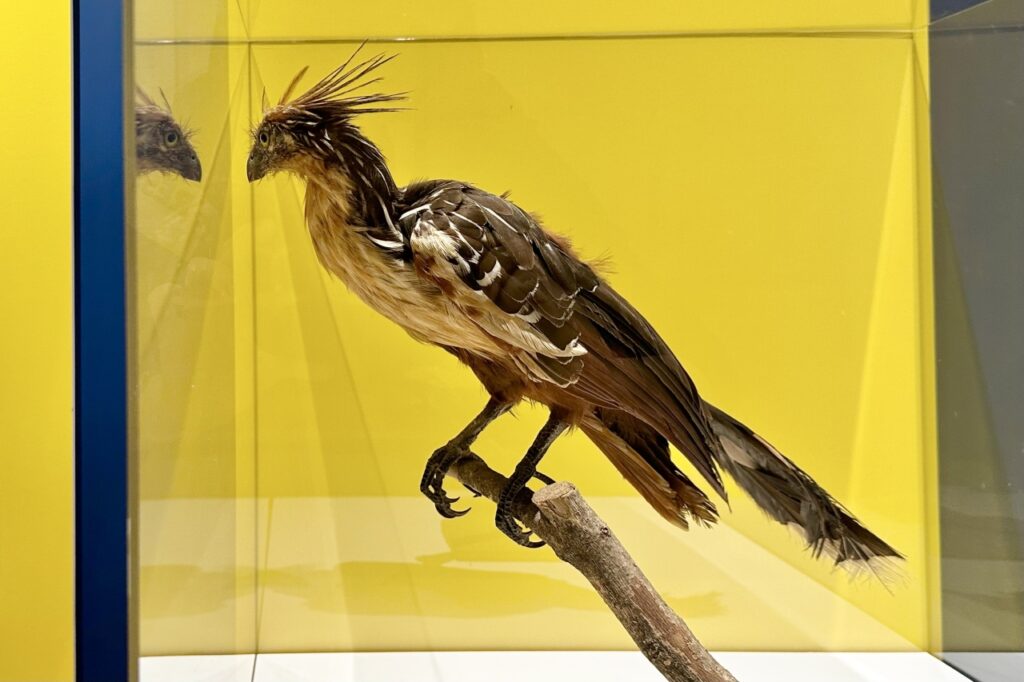
Generally, bird "orders" branch off at roughly the same time, with the groups that branched off between 66 million years ago, when the mass extinction of the dinosaurs occurred due to an asteroid impact, and around 50 million years ago. The Hoatzinidae order did not branch off for over 50 million years, and it is unclear whether they survived as a single species or whether they became extinct with only one species remaining, making them a rather mysterious species.
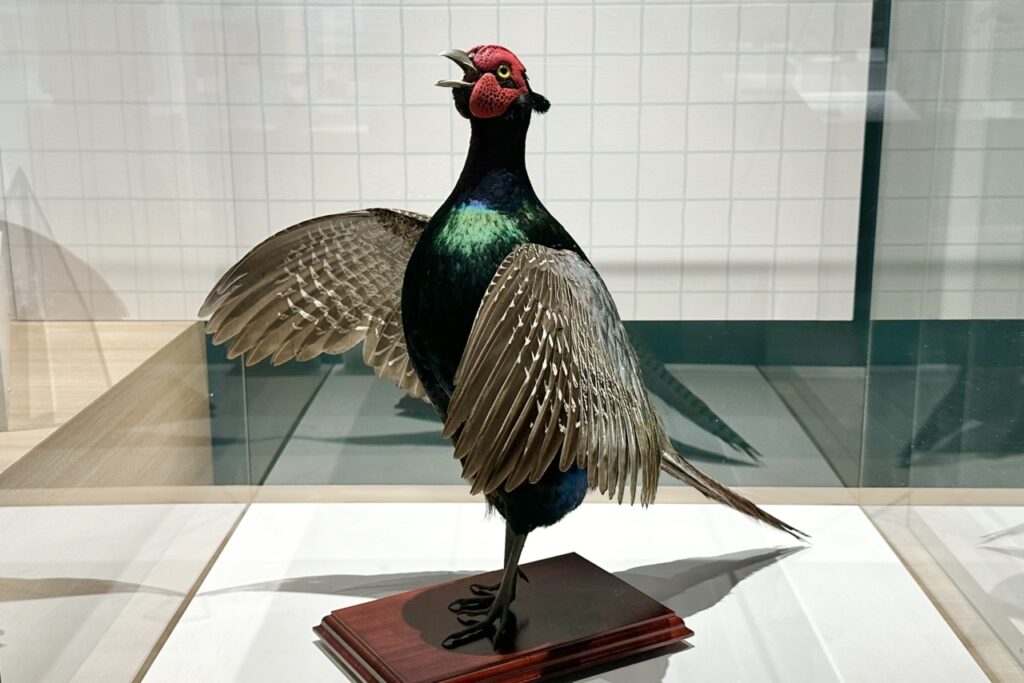
The "Secrets of Birds" section, which features contributions from Watari Numagasa , a popular creator known for his illustrated animal illustrations, is also a must-see.
The corner has 23 themes, such as "Do cuckoos' egg-laying parasitism lead to the death of their hosts?" and "Bird dialects and words" , and introduces the latest research findings in the form of trivia. Numagasa Watari's illustrations help visitors understand the exhibit with their humorous, chuckle-inducing illustrations.


One of the curators, Shoji Hamao (Chief Researcher in the Zoological Research Department at the National Museum of Nature and Science), said, "In this exhibition, we wanted to emphasize the differences in how birds and people see the world," referring to the exhibit in the same corner, "What pigeons can teach us about the 'minds' of birds."

The results of an experiment were presented in which pigeons, trained to distinguish between Japanese and Western paintings, were shown scrambled images in which the original painting was divided into 1,024 parts and rearranged randomly. While it is difficult for humans to determine whether the original painting is Japanese or Western, pigeons were able to easily distinguish between the two, even when seeing the painting for the first time.
"Humans are good at looking at the whole picture and picking out features, but pigeons are very honest about the small details, and they look at each and every detail and remember it. That's how they perceive things. In other words, they perceive the world differently. This story doesn't mean that pigeons are smart or not, but it shows that Homo sapiens and birds perceive things differently, and see the world in different ways," says Hamao.
Hamao also mentioned an exhibit on the surprising pairing relationships between male and female birds. As the term "lovebirds" suggests, some people may imagine that birds form monogamous pairs and raise children together in harmony. However, for example, when a male pheasant has a baby with a female in his pairing, he abandons nest-building, incubation, raising the eggs, and the bond with his partner, and instead courts other females one after another, which is why he is said to be polygamous (or promiscuous).
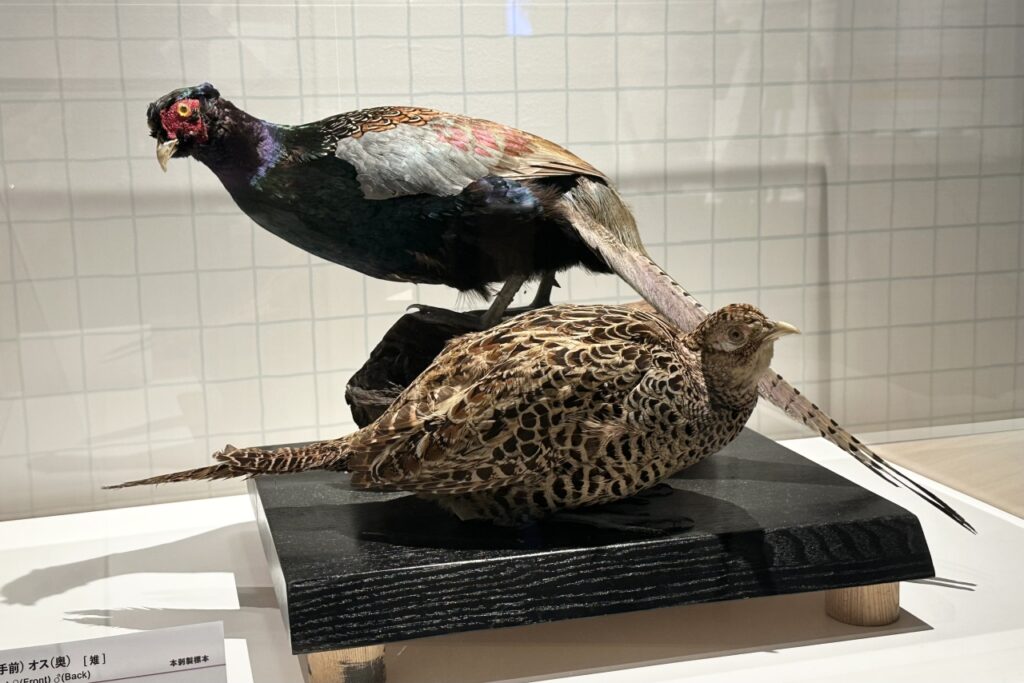
From a human perspective, this behavior would make one frown, thinking, "How can they move from one woman to another without raising their young?" But in reality, the chicks mature quickly, and one bird is enough to raise the young. Hamao says that this is the result of each individual bird evolving to leave as many young as possible in the harsh natural environment.
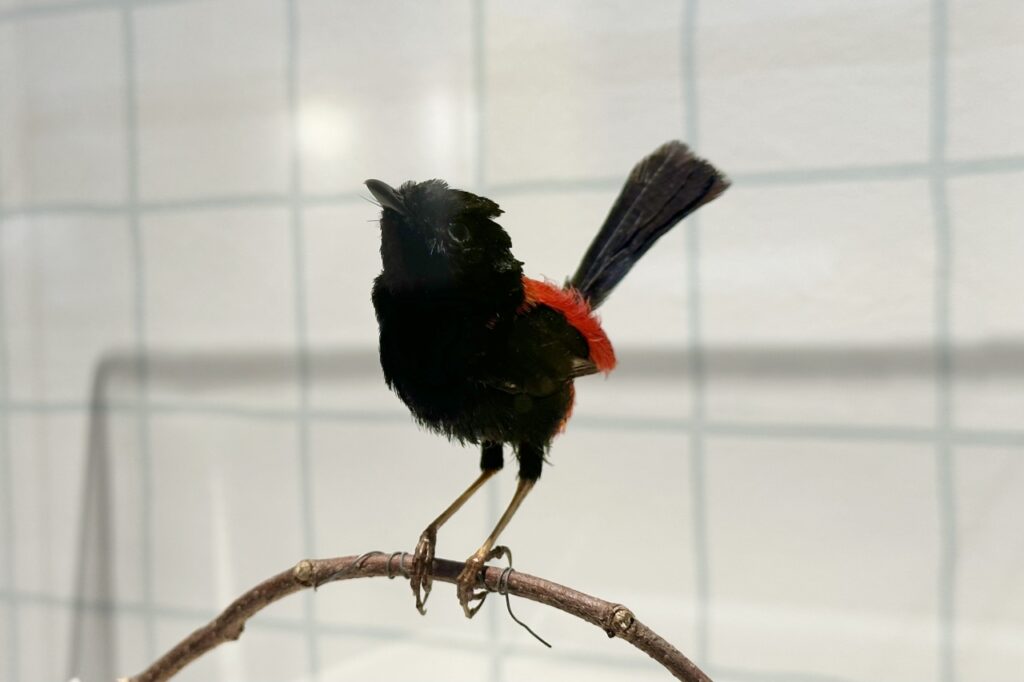
"The image we have of birds, that humans think birds must think this way because we think this way, is surprisingly not accurate. Birds have acquired all sorts of characteristics to leave more offspring under the harsh selective pressure of evolution. So we shouldn't think of this in terms of humans. We create exhibits like this with the idea that we need to know what birds really look like, admire them, and think about conservation." (Hamao)
Genome analysis has revealed a different image of birds than we had previously. What ecological characteristics do they have, what kind of lifestyles do they lead, and what role do they play in the ecosystem? Now that we know this, what kind of charm will we find in them? This exhibition will be the perfect opportunity to update our image of birds in the genomic era.
Summary of the special exhibition "Birds: New bird lineages revealed by genome analysis"
| Dates | November 2, 2024 (Sat) – February 24, 2025 (Monday/Closed) |
| venue | National Museum of Nature and Science (Ueno Park, Tokyo) |
| Opening hours | 9:00-17:00 (entrance until 16:30) |
| Closed Days | Mondays, November 5th (Tuesday), December 28th (Saturday) – January 1st (Wednesday), January 14th (Tuesday) *However, the museum will be open on November 4th (Monday, holiday), December 23rd (Monday), January 13th (Monday, holiday), February 17th (Monday), and February 24th (Monday, holiday). *The session and other details are subject to change. |
| Admission fee (tax included) | Adults and university students: 2,100 yen; elementary, middle and high school students: 600 yen *Free for preschool children. * Free for those with a disability certificate and one caregiver. *If you have a student ID or any other certificate, please present it upon entry. |
| Organizer | National Museum of Nature and Science, Nihon Keizai Shimbun, BS TV Tokyo |
| inquiry | 050-5541-8600 (Hello Dial) |
| Exhibition official website | https://toriten.exhn.jp/ |
*The contents of this article are current as of the date of coverage. Please check the official exhibition website for the latest information.


